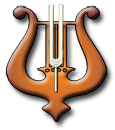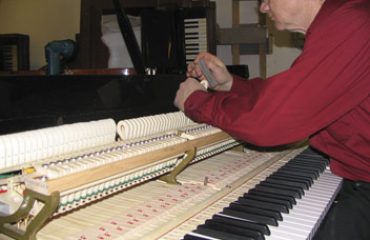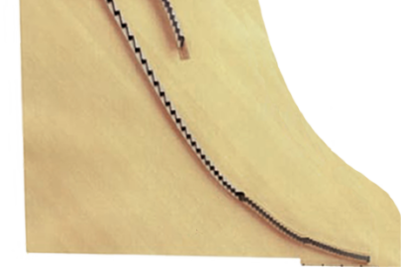
It will be useful for you to understand one of the causes of the false beats phenomenon.
We already know that a beat is heard when two strings are tuned with a slight difference in their frequencies.
For example, a string tuned to 440Hz, set in vibration with another string tuned to 442Hz, will produce 2 beats per second.
Usually, and certainly with quality pianos, a string vibrating alone won’t produce any beat, but this is not necessarily the case with low quality pianos.
Example on a grand piano:
If the bridge is well cut, the string will vibrate vertically, following the hammer strike.
On the other hand, if the bridge is poorly cut, the string will vibrate vertically at first, but will then shift itself, onto a horizontal vibration.
This phenomenon is perceptible to the human ear, and manifests itself as beats.
Thus the task of the tuner, which consists in eliminating the beats, will be more difficult if not impossible to achieve.
It is those beats produced by a single string that we call:
FALSE BEATS!
Every piano tuner’s nightmare.
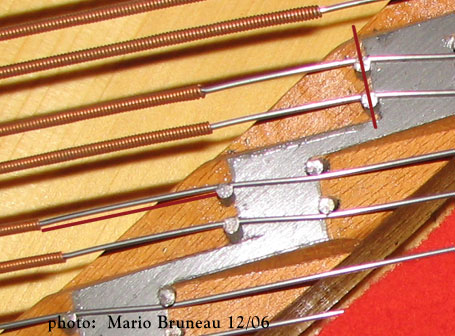 Here is an example of a poorly cut bridge.
Here is an example of a poorly cut bridge.
The chisel stroke or cut, should go through the diameter of the side bearing pins, represented here by the red line.
We can see that the cut has been made, way behind the side bearing pins.
Result: two points of contact, at different positions of the string.
One horizontal contact and another vertical contact!
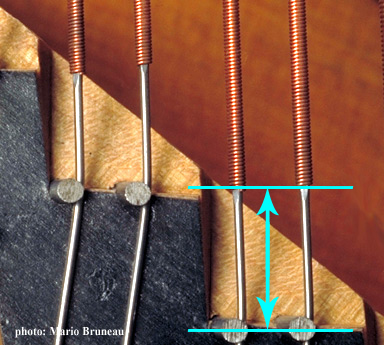 A bridge trimmed to perfection!
A bridge trimmed to perfection!
Take a look at the precision of the cuts.
Even the distance between the side bearing pins, and the wrapping of the string, is perfect.
The result obtained, is a pure timbre, with well-defined harmonic, and a solid quality of sound.
